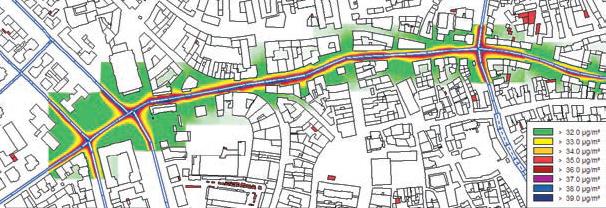Is an extension of CadnaA for calculation of air pollutants.
Option APL enables the calculation, assessment and presentation of air pollutant distribution according to the relevant European guidelines. The results obtained can serve as the basis for action planning with regard to air pollution mitigation plans.
Option APL combines the user-friendly interface of CadnaA with the dispersion model AUSTAL2000, which is state-ofthe- art air pollution modeling. The implemented Lagrange particle model considers time-dependent emissions from road and industrial sources, variable wind fields and atmospheric stability and takes account of terrain and buildings.
Using the CadnaA PCSP technology (Program Controlled Segmented Processing) for full-automatic tiling, project distribution and processing on a network, the dispersion maps e.g. for traffi c induced pollutants, can be calculated for a project of any size.

FIELDS OF APPLICATION
- Calculation of air pollutant emission and immission in cities and urban areas
- Prognosis of air pollutant emission and immission to assess mitigation plans for road traffic
- Assessment of measures in the context of noise and air quality mitigation plans
- Prognosis of air pollutant emission and immission by industrial sources
FEATURES
- Maps showing air pollutant distribution for different components (e.g. PM10 fi ne particles, NO2, NOX, SO2, benzene)
- Meteorological time series with time dependant emission of point, line and area sources
- Standardized emission factors for road traffi c
- Calculation of dispersion of pollutants with high resolution, including the buildings and the terrain
- Grid arithmetic: superimposition of immission maps from several types of emission sources
- Calculation of plant-specifi c immission impact in the vicinity including the effect of thermal boost
- Completely implemented into the CadnaA user interface

